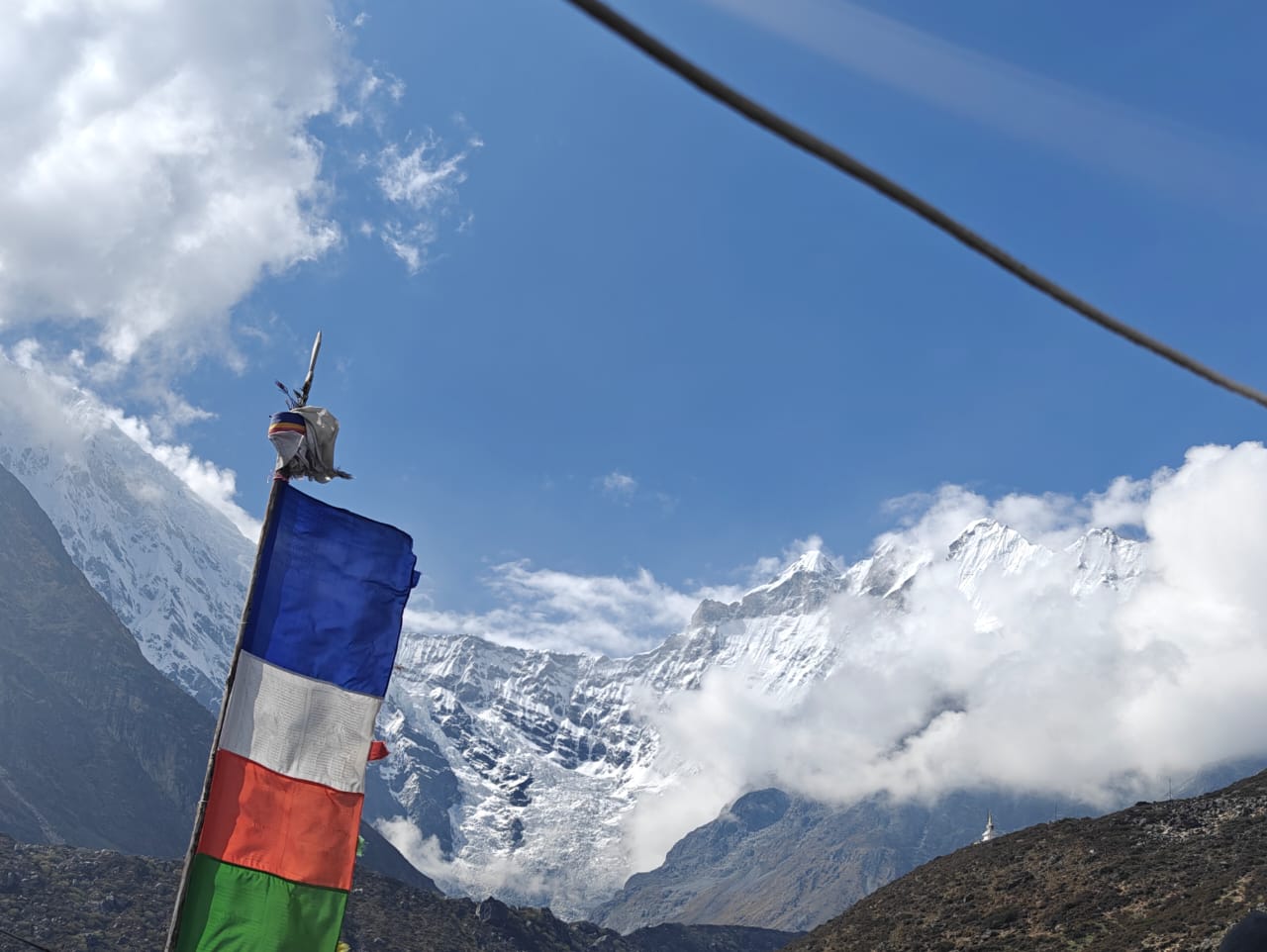In a country known for its spectacular landscapes, its towering peaks, and its sprawling trekking paths, the Langtang Valley Trek fades into the background of the famous giants. If you’re a seasoned trekking enthusiast, you’ve perhaps heard of the famous Everest Base Camp Trek, or the Annapurna Circuit. But if you’re a little short on time, looking for a hike that’ll pull you up by the bootstraps and keep your chin tilted up with the view, the Langtang Valley trek is not to be missed.
Sites list this trek at a moderate-to-hard difficulty level, which may have you worried about your fitness levels. I was certainly a little worried, coming off a month-long recuperation in bed due to kidney stones and popping straight into this trek just two months down the road. But I chugged along for the six day journey with no trouble at all. The first couple of days involve a winding uphill through the forests, and your knees will ache a little from all the rocks – but it is so worth it once you get a glimpse of the Langtang Lirung Glacier, its lake pooling at the base, surrounded by the infamous 7000m peaks.
If you’ve been trekking before, you know that the group you join for the expedition can either make or break the journey. Sometimes you find the naysayers, whose groans and grunts bring the morale down, or the overly fit, making you feel like an oversized lug dragging yourself on behind them. Our group was a compact little thing of ten people – and I can truly say that they were perfect. The youngest, a college girl of twenty, was the quietest of our boisterous little gang, and she agreed to sit down and pen this piece out with me. So here goes: A (hopefully) illuminating travel experience of the Langtang Valley Trek, by the oldest and youngest of the group.
When to go?
To be honest, we didn’t really look at optimal times when planning out this trek – but luckily we were caught in the sweet spot between summer and monsoon, when the weather is crisp and cool, with only a few slight drizzles now and then. I firmly dissuade doing this trek in the rains – many paths are rocky and steep, and can get quite slippery. Many places along the way also close down during the monsoon season, so watch out for that before booking the trek.
March to May are the perfect months to do this trek, and although the first few days may be a little hot and sweaty under the collar, you’ll be glad for the clear skies when you get up to Kyanjin Gompa and see the glittering peaks in all their glory.
The Trek Begins:

Depending on where you’re from, the journey to Kathmandu, the capital of Nepal, can either be a short, comfortable plane ride – especially if you’re from India – or a tiresome experience. It’s important to have a relaxing evening before a trek, so that you can hit the road running. Explore the crowded ruckus of Thamel to get good deals off trek-wear, and grab a cosy dinner in an authentic Nepali restaurant. We spent the first day getting to know each other (always recommended if you are about to spend the next week in close proximity), and shared a drink in low bar light in a delicious momo hut.
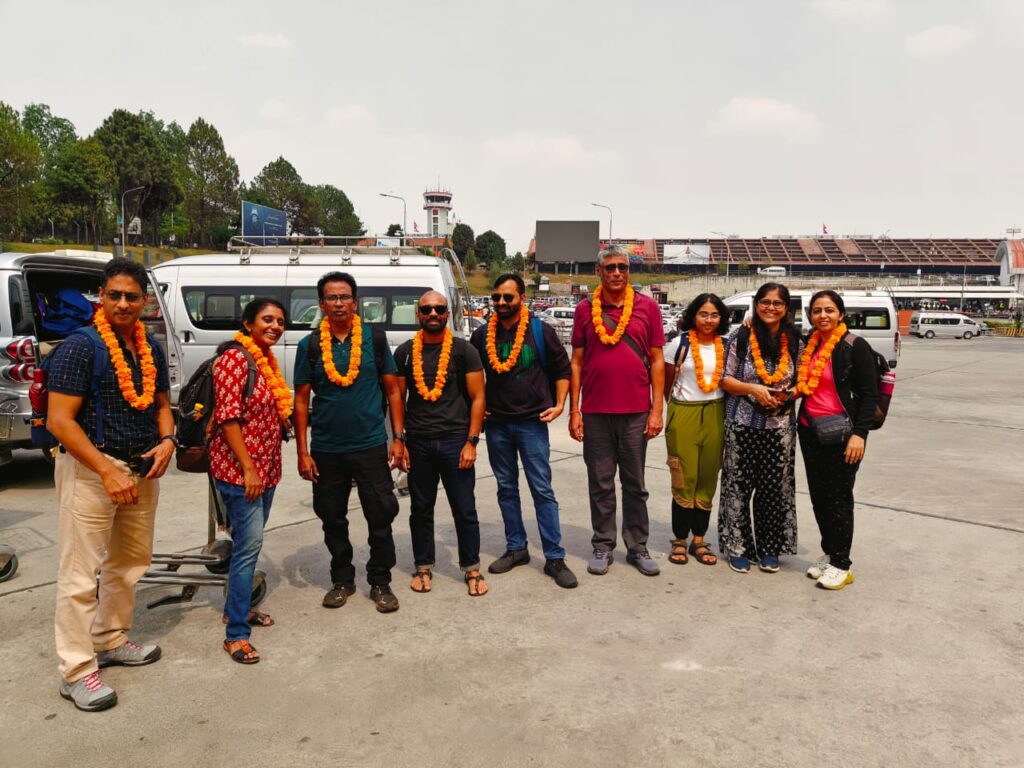
[At Katmandu Airport]

[At Katmandu Hotel]
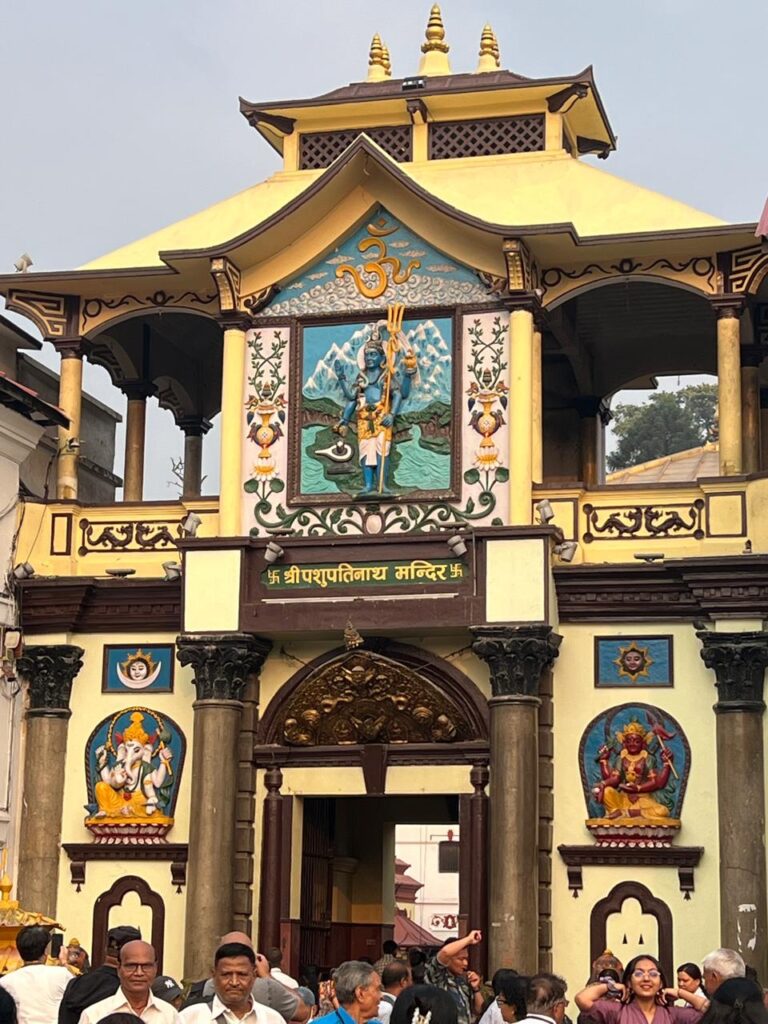
[Vist to Pasupathinath Temple to seek the blessings of Lord Shiva]
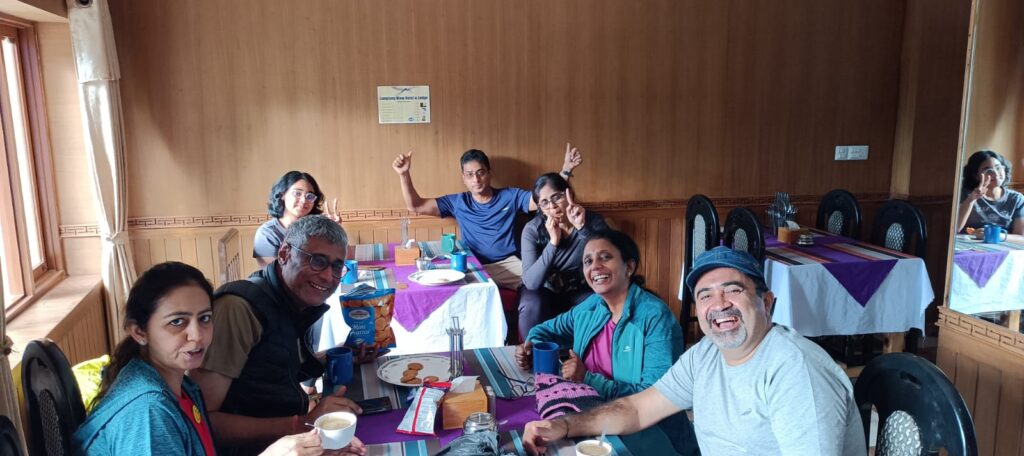
[Getting to know each other on the first day.]
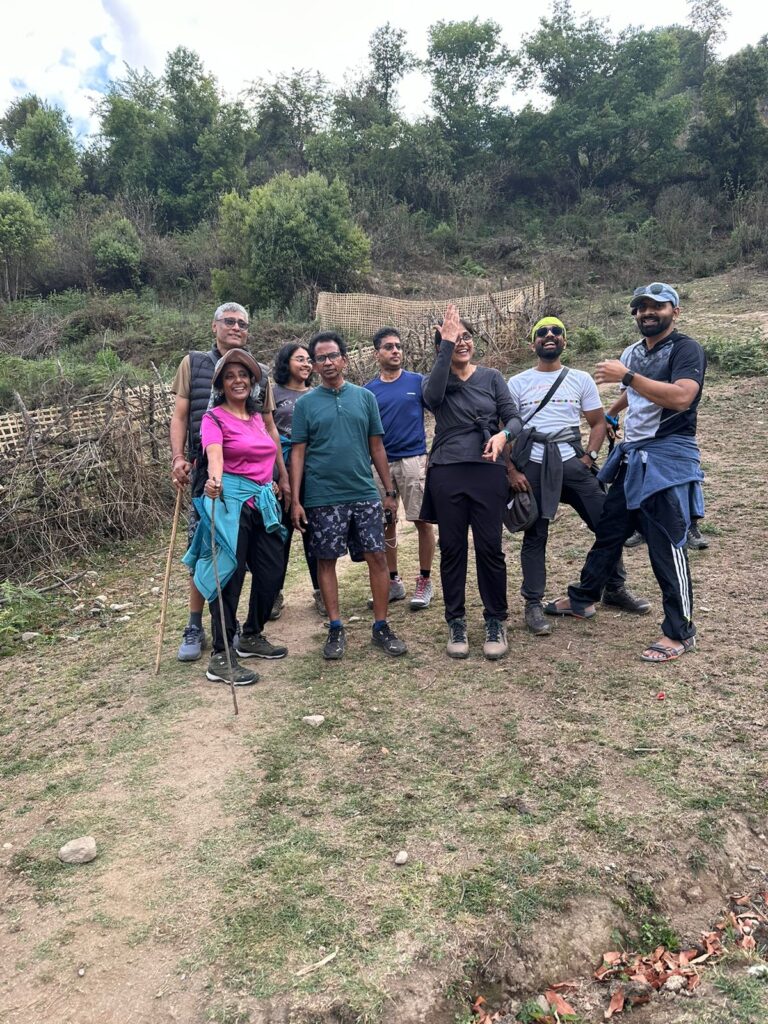
[A short trial Trek on the first day]

[A group photo with all the Nepali Porters]
Many itineraries list the first day of the trek to start after a quick three hour drive from Kathmandu to a midway lunch spot, and walk in the afternoon heat to Syabrubesi. My recommendation? Don’t. The next two days of the trek are quite gruelling, and an exhausting first day will spoil both motivation and the experience. Instead, drive the six hours to Syabrubesi in a jeep, bouncing quickly over the rough terrain – taking a few short breaks to pluck sweet nectarine berries from roadside bushes (they’re delicious, I promise) – to reach Syabrubesi by teatime. You can spend the evening either trekking up the local hillside, or exploring the gorgeous monastery. For the photophiles, you can meander about the village and capture views of the setting sun. Spend the night tucked up warm, and get well rested for the next day.
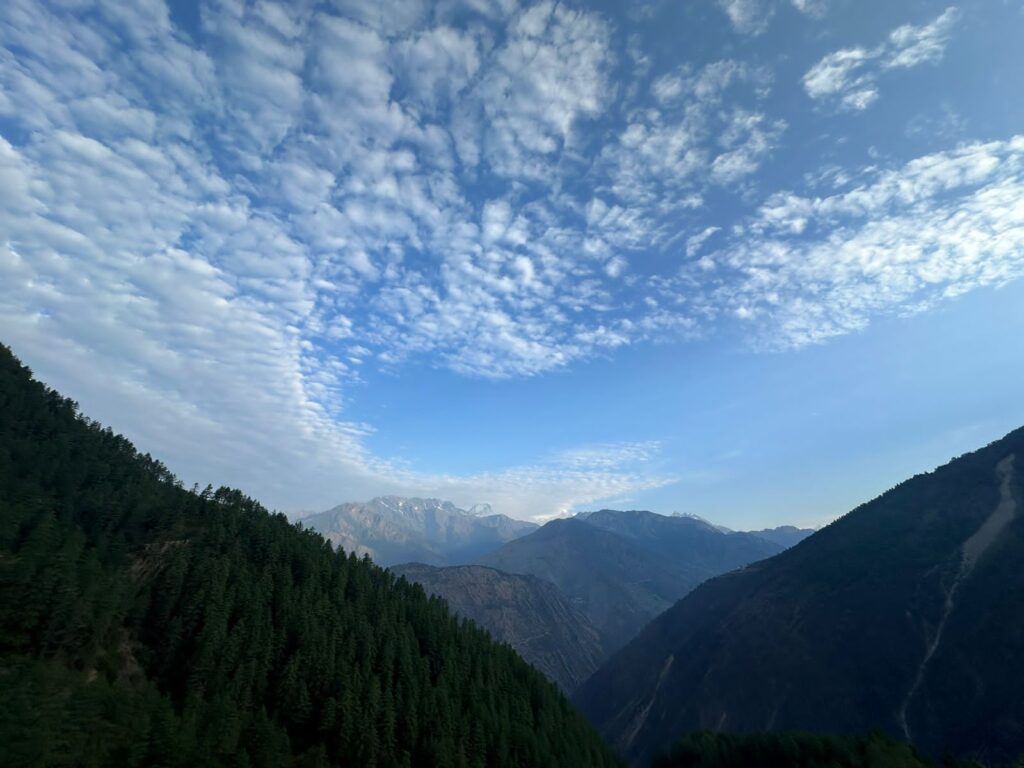

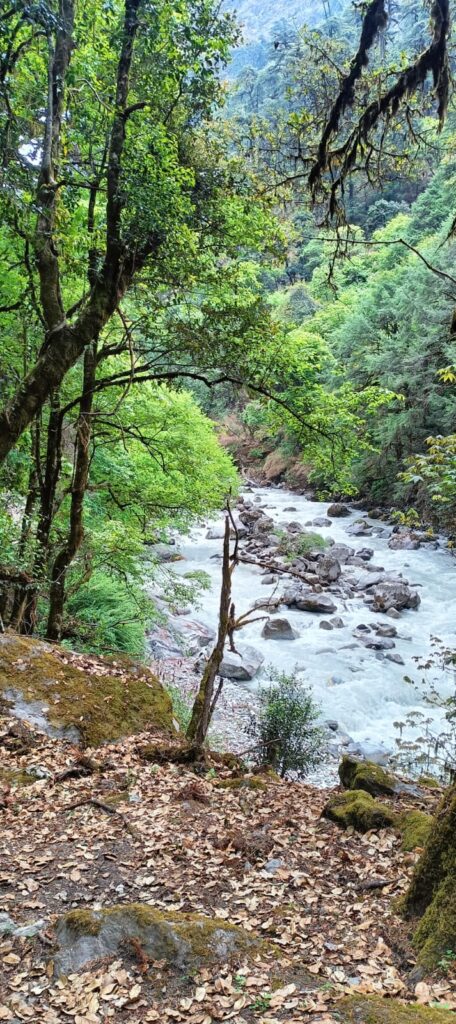
Day two begins with a trek from Syabrubesi to Lama Hotel. This is perhaps the most difficult day of the trek. I wouldn’t say it’s all downhill from there on; but it certainly is flatter! The day begins with a steep climb down to the river, where you can splash about for a short bit, the rocks leading right up to the water, and then a tiresome uphill journey for about three hours. Our group had two first-timers, who were grumpy and all-too-ready to quit after the final uphill stretch to the Lama Hotel, and were even more upset when it was revealed that there was no wifi, network, or even electricity through the night. For the picky eaters: either let that all go for the five days of the trek, or pack your own condiments – you will be bored of the constant menu of momos, noodles and fried rice, but you’ll need to keep your energy up. Hilariously, the Lama Hotel we stayed at had the thinnest walls – with holes in them! There was laughter and teasing through the night, jokes called through thin wood, and even the grumps loosened up to have a good night’s sleep.
The next day started off bright and early with yet more uphill, but the path quickly evened out into steady green patches of land. As trees shortened into shrubbery, the mood grew, and soon we were having fun pointing out local wildlife and flowers. As we crossed the last of the treeline, a sharp uphill stole all our breaths, and to add insult to injury, we had our legs firmly pulled by one of the mountainside maintenance officials who talked about tigers and leopards, waving his garbage collection stick around like it was a weapon (unfortunately, the true nature of the stick was only revealed to us later). The final kilometres to lunch had everyone complaining about sore feet, until we were shuffled to the side to leave way for porters carrying a huge amount of weight on their shoulders in the form of wooden planks, which had everyone quietening down quickly. Lunch was the normal affair of Dal Bhat – white rice, served with Dal, a potato curry, Greens and a papad – which while not being the most flavorful, is energising while not being too filling. Filled with food, the next thirty minutes of gruelling uphill was achieved successfully (though not without a few more grumbling complaints), and then it was pictured by the cliffside until we made the final trek up to Langtang Valley.
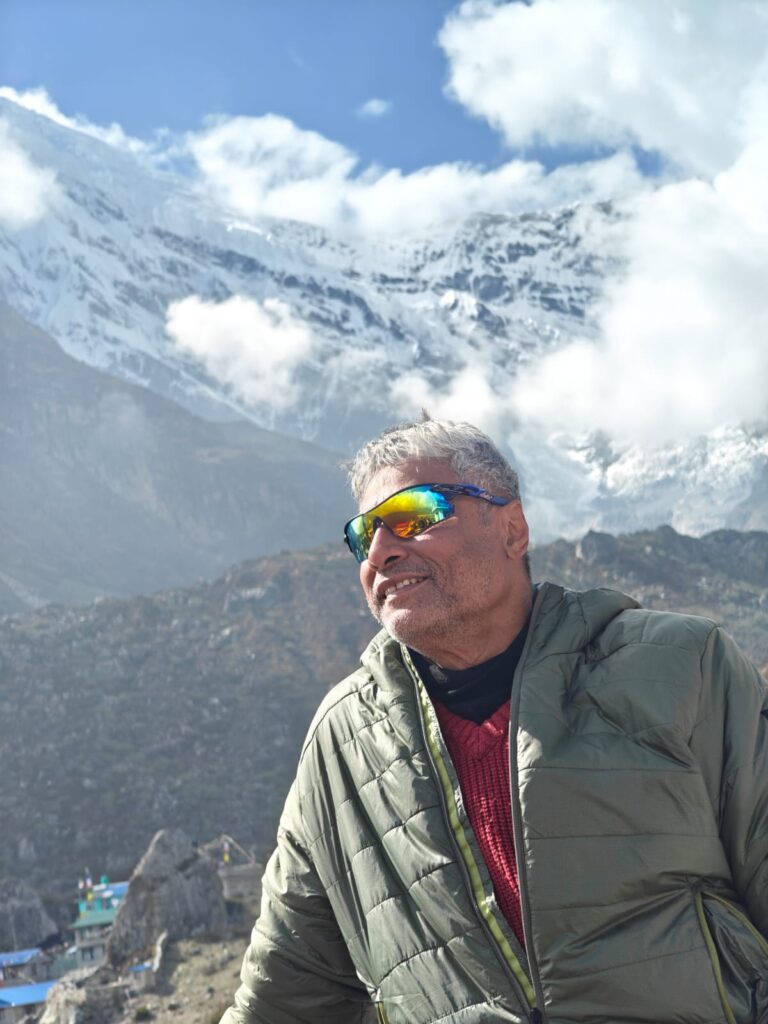
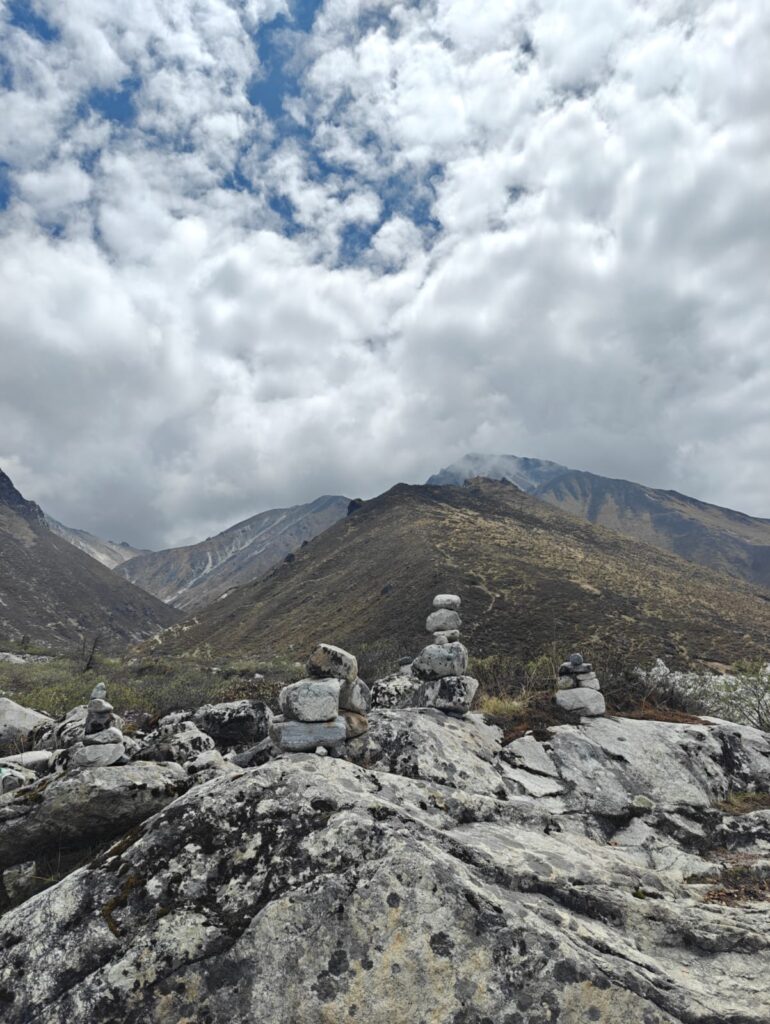
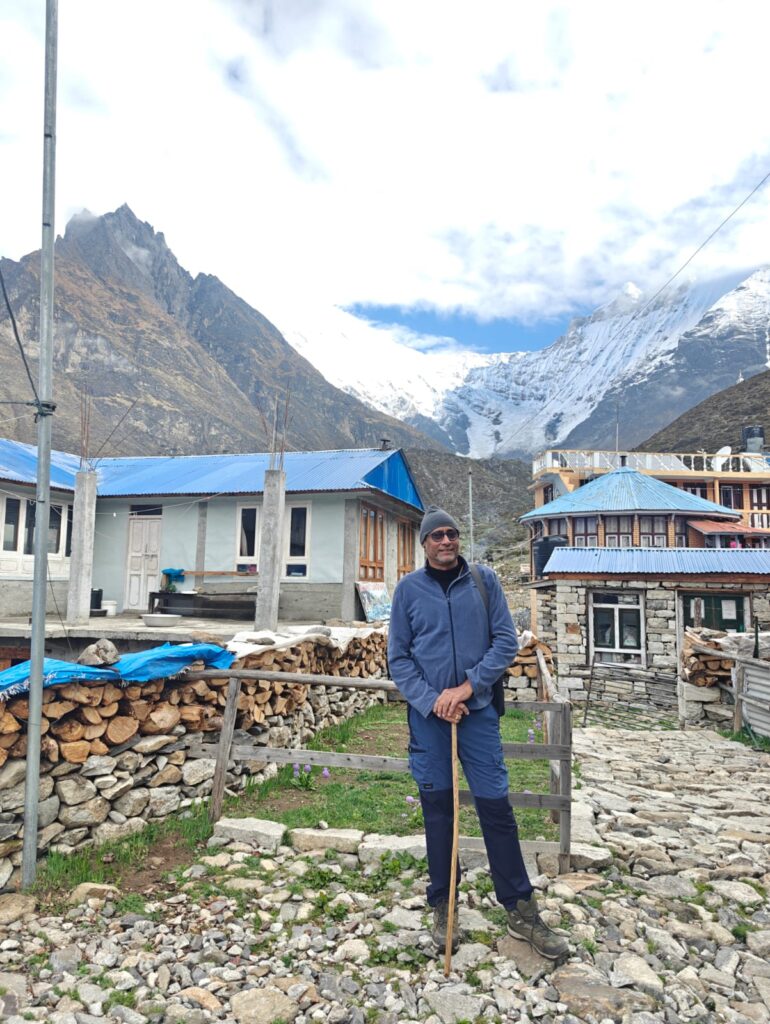
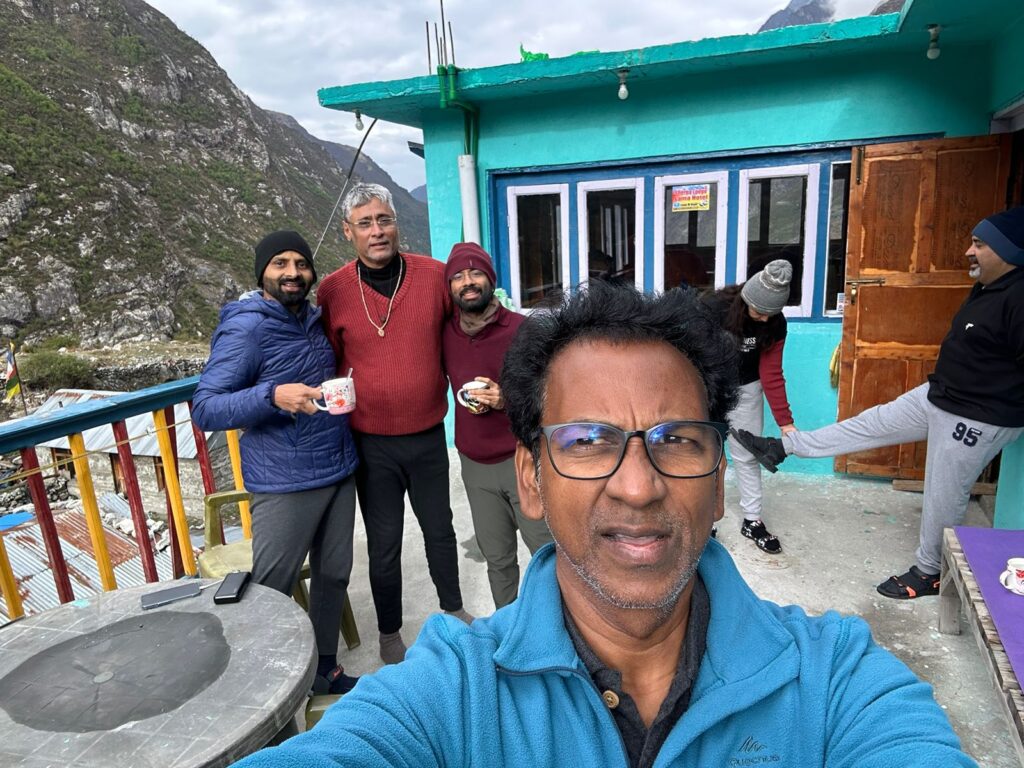
[At Langtang Tea-House Terrace enjoying coffee and tea]
The record-breaking earthquake in April 2015 shattered homes and lives across Nepal, taking almost 9000 lives. Langtang Valley did not escape this tragedy, and unfortunately fell victim to the earthquake. An American couple, trekking through Langtang Valley during this time recounted their experience: they’d left the valley shortly before the earth began to shake beneath their feet, and when they hastily retraced their steps, they found that the village that had offered them abode for the previous night had been flattened by the surrounding mountains. Looking at Langtang valley today, you would be hard-pressed to find evidence of the catastrophe – such is the extent of rebuilding achieved over the past decade. Like a phoenix from the ashes, the new village has emerged from the rubble, held strong at the foundations by the unmatched valour of the survivors. A memorial to the fallen stands in the entryway to the village, and you find remnants of the earthquake in the herd of Yaks grazing in the fields, belonging to the farmers who lost their lives.
The tall green building rising at the end of the valley was our place of stay for the night, and the quality of the guest house matched those in the city. To beat the cold, the dining room was situated at the top floor of the guest house, but this strategy went unpraised by our tired group, groaning and complaining as we trudged up four flights of stairs to collapse in front of the burner. Here, we had our first tastes of Seabuckthorn juice – a citrusy, orange drink, served warm. The best part of the guest house was the thick mattress rolls provided – which meant we didn’t have to roll out our sleeping bags and struggle to shove them into our duffles in the morning. With the promise of a shorter and easier walk the next day, we ate as much dinner as we could, before walking down the four flights of stairs on sore knees to crawl into bed.

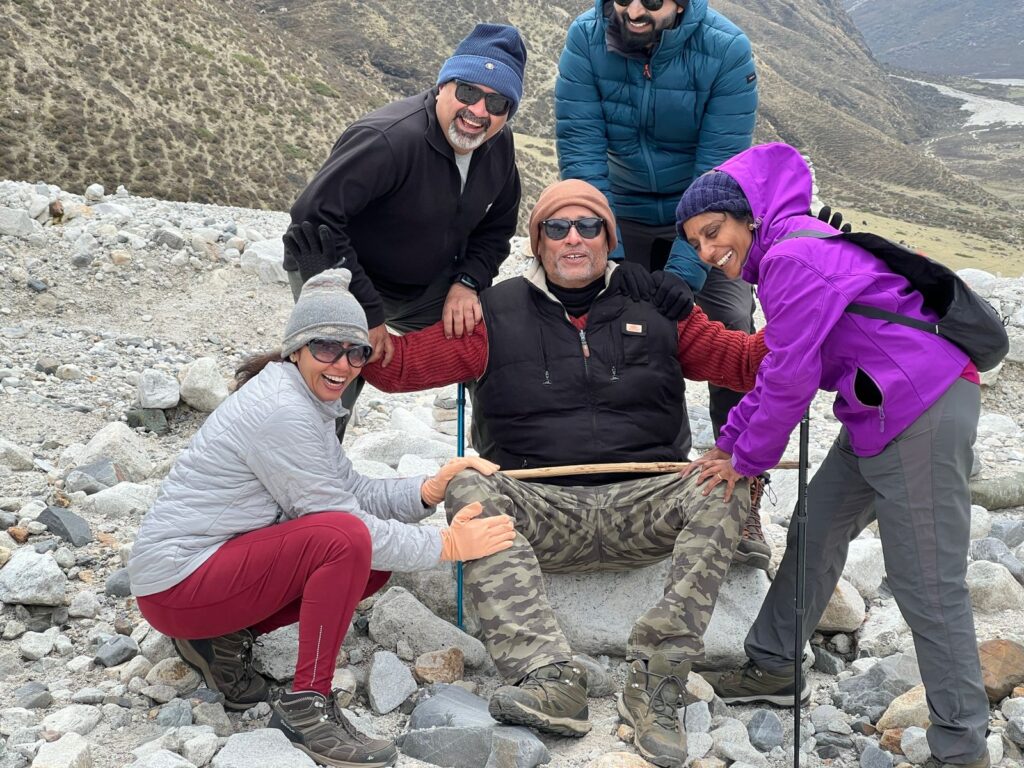

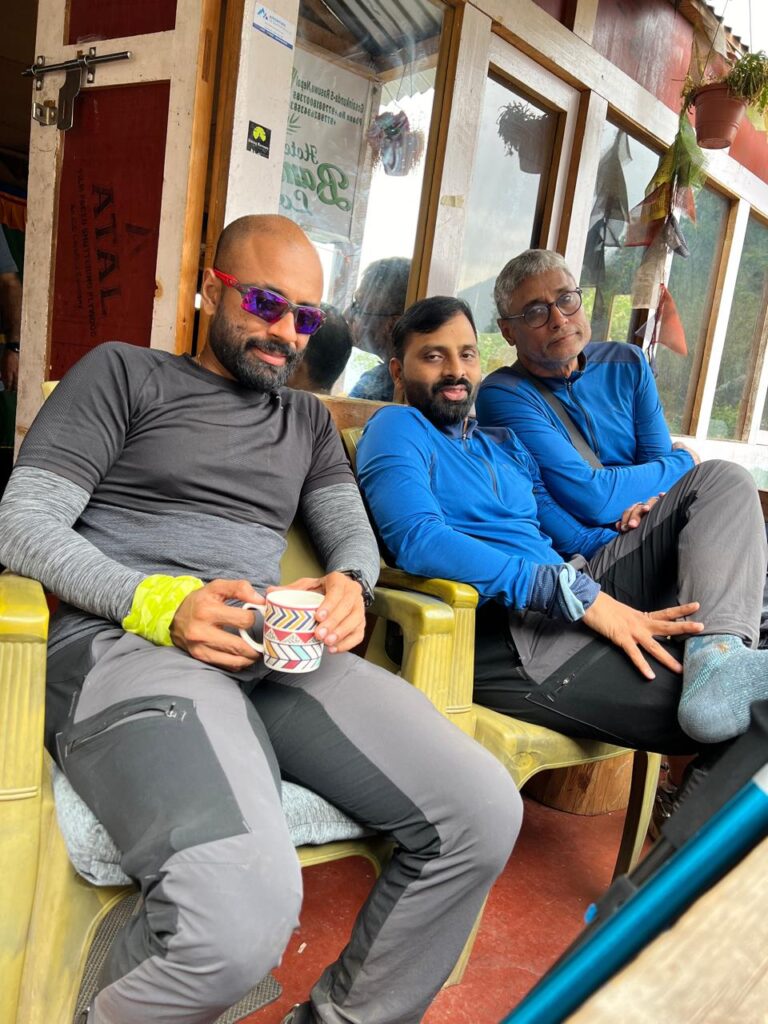
The final walk to Kyanjin Gompa was as promised – flat and easy. Elongated by our constant halts to take pictures of the mountain-side, it was a day filled with smiles; only periodically interrupted by complaints when we had to climb shortly uphill. As we’d climbed up to 3500 metres, the river had joined us on our journey, and now wound between our feet like an affectionate kitten as we ascended the final ridge overlooking the village of Kyanjin Gompa. Keep an eye out for the spinning prayer wheels propelled by the river water gushing over smartly constructed turbines at their base.
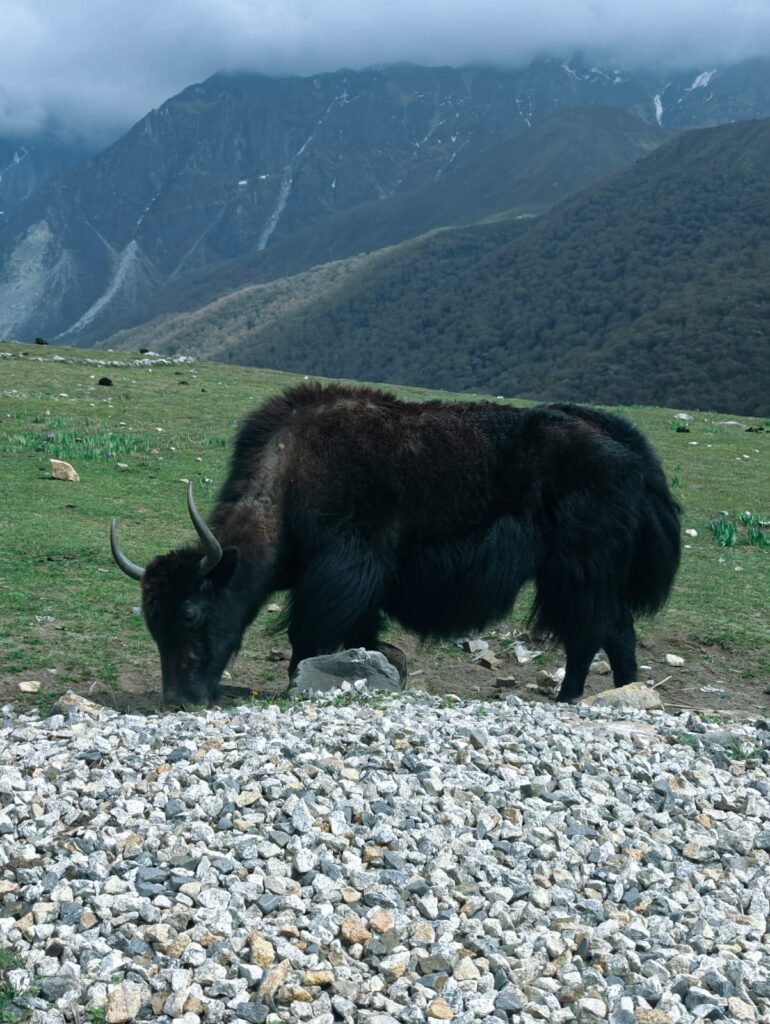
[Only Yak Milk/Cheese available]
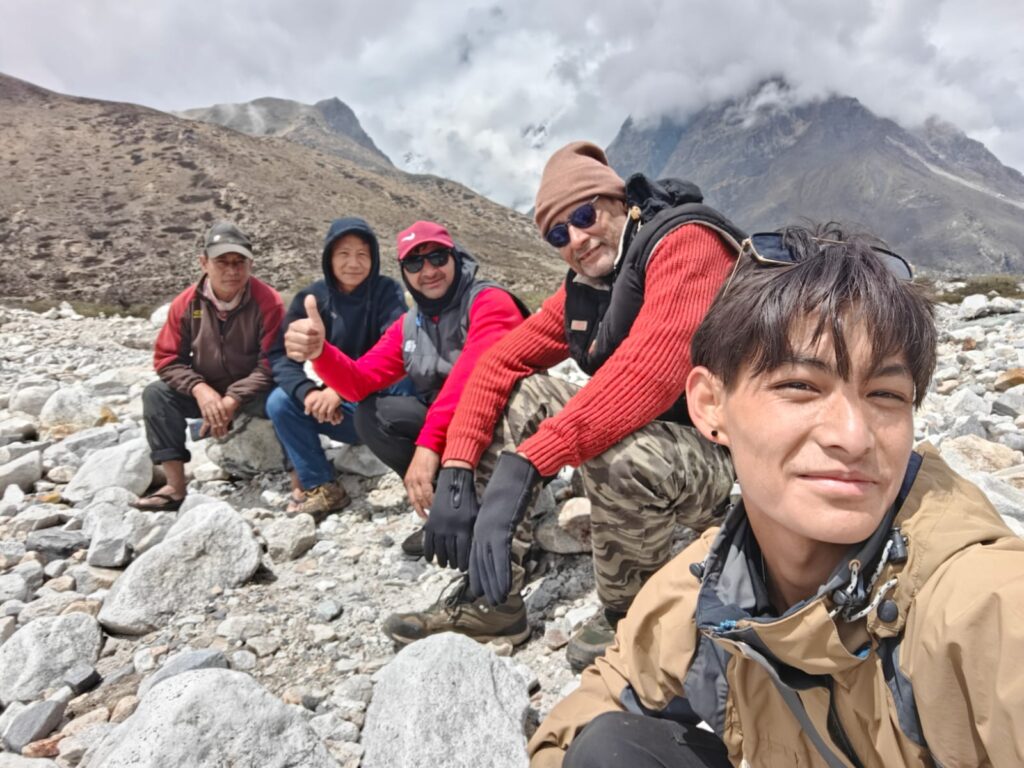
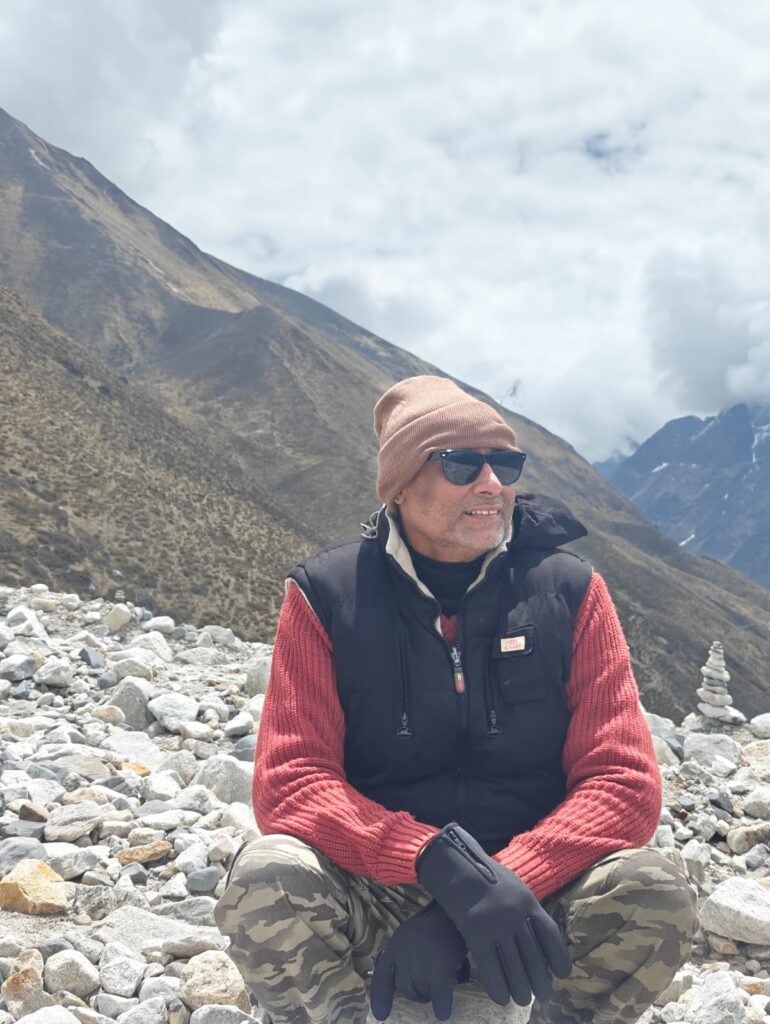
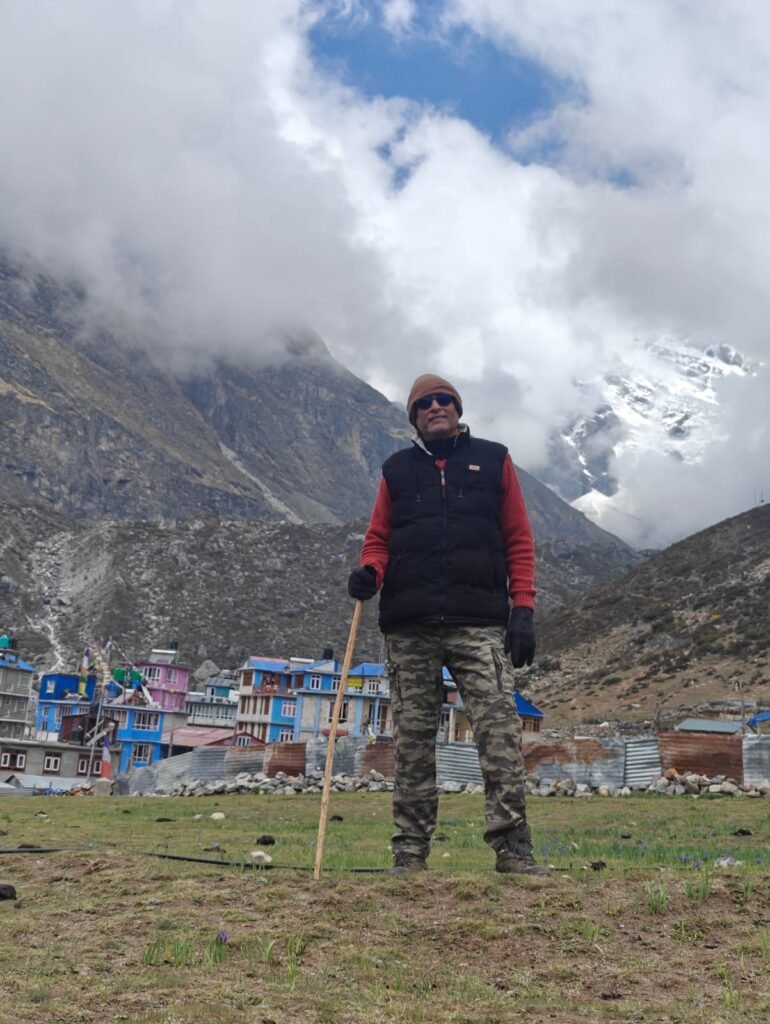
The entire group was at Kyanjin Gompa by lunchtime, when we were told that we would be spending the next day there as well. There were clamours of joy at a rest day, hushed worry at trekking all the way down to Lama hotel the day after that, and joking negotiations as to whether a helicopter ride down the mountain would be possible. After a quick nap, the group split up into little handfuls, and four of us made the trek up to the lake at the base of the Langtang Glacier. Following the metal pipeline that fed water to the villages, we ascended the mountain up a steep pathway that had my head spinning, and my lunch dangerously threatening to evacuate my system. Luckily, before anything messy could happen, we reached the top after a 45 minute climb, and sat on rocks overlooking the large lake. The cloudy evening curtained our view of the glacier, and we quickly scurried down the hill as rain started to fall. During dinner time, we planned out our trip for the next day. Half of the group was glad for the rest, deciding to sleep in and have a lazy morning, while the other half wanted to climb Kyanjin Ri – widely regarded as the best viewpoint of the Langtang trek – just for the challenge.
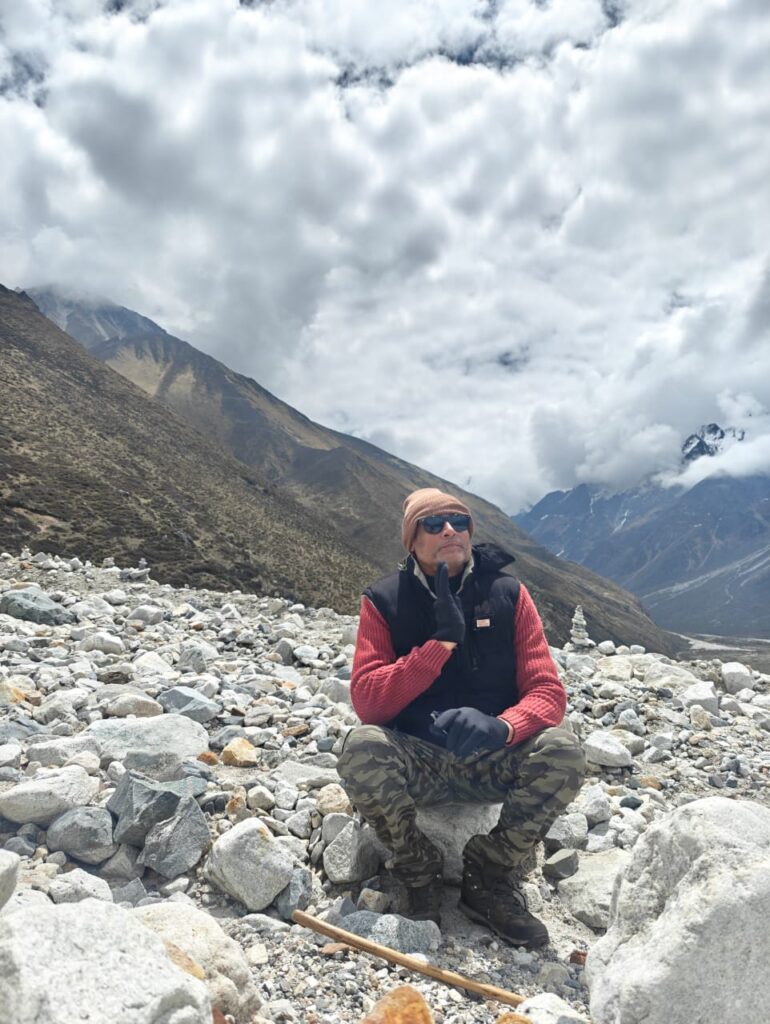
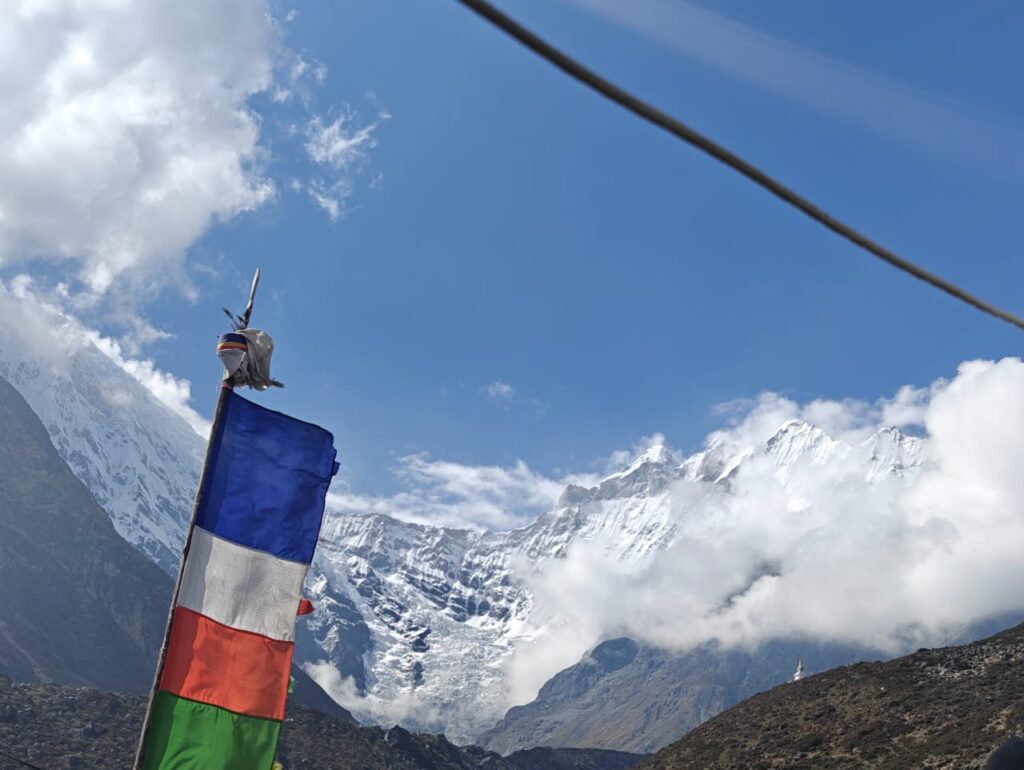
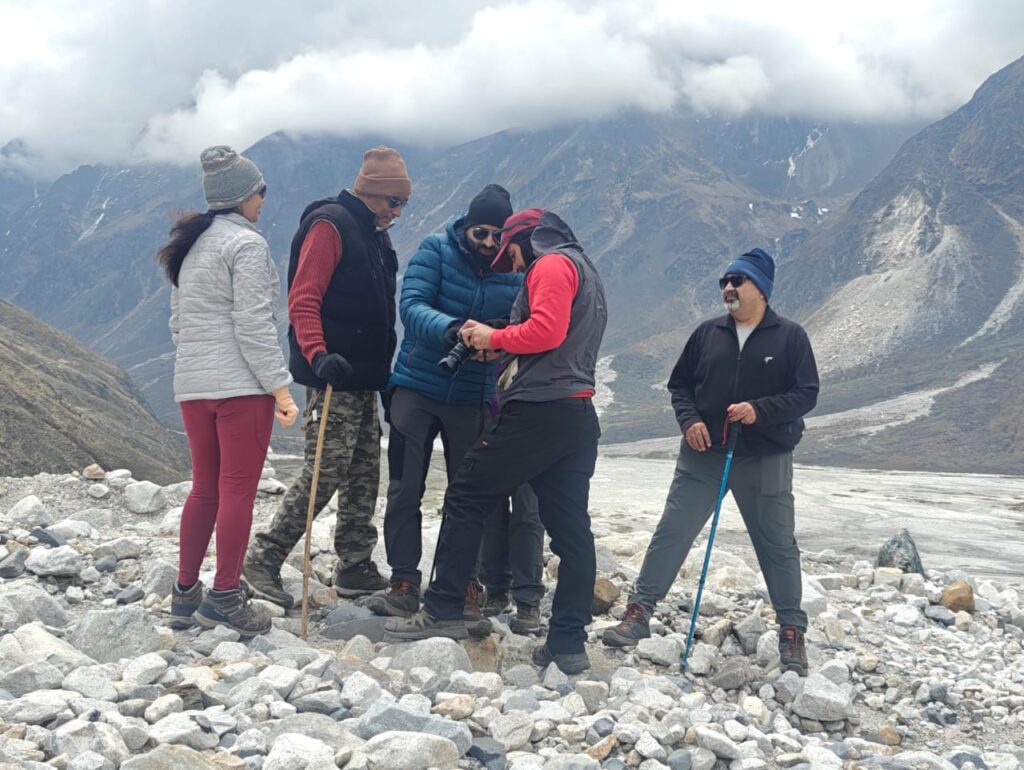
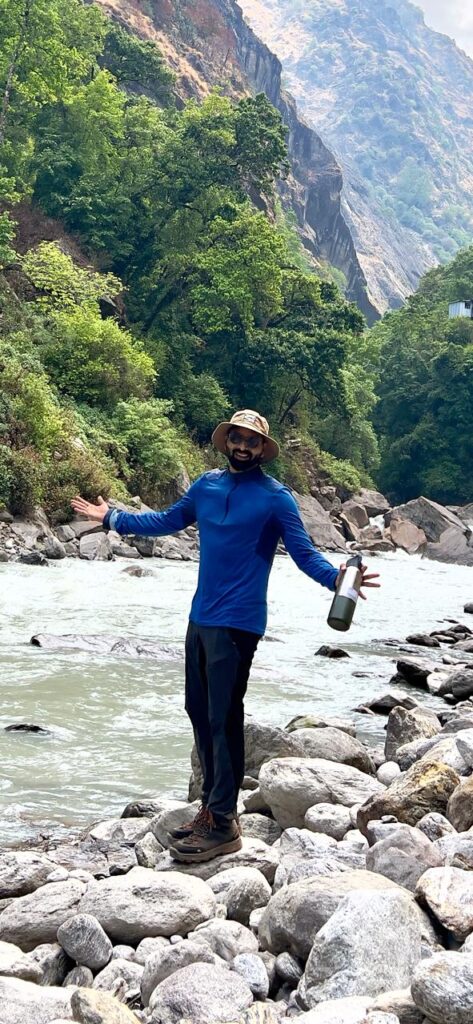
[Our man Kumaran in full spirit]
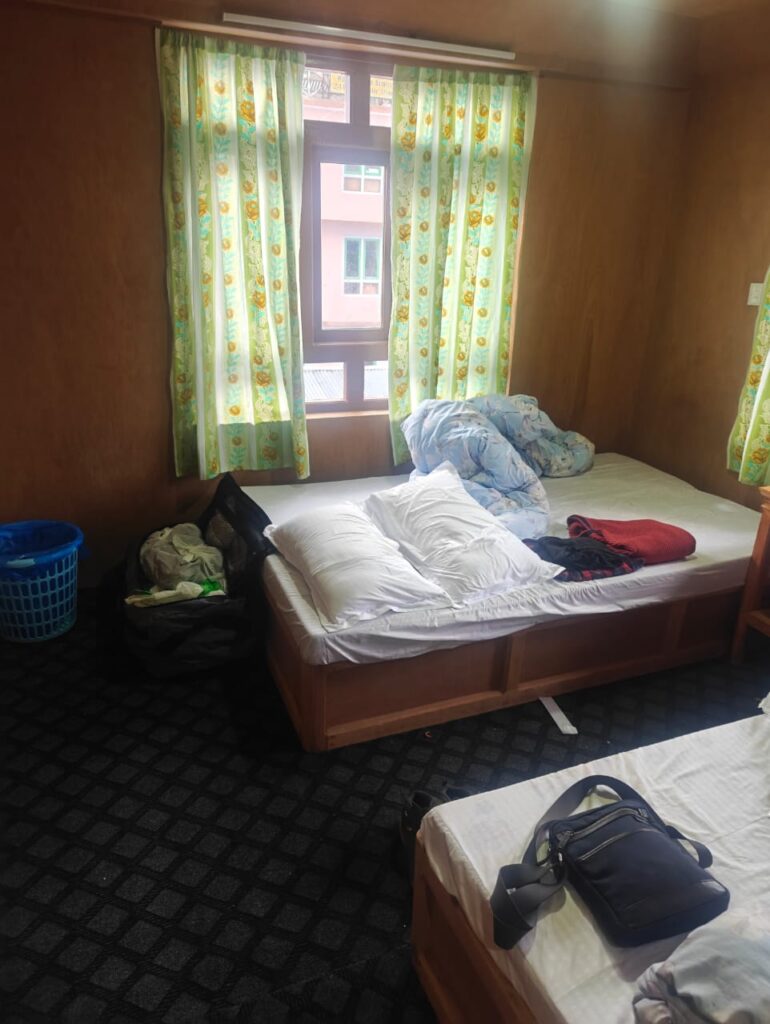
[One of the rooms in the Tea-houses]

[Attached Toilet]
When I woke up the next day, the memories of the lightheadedness and nausea of the day prior had me reconsidering this decision. What had I been thinking – did I really need to do this? Of course, competitiveness once again being my greatest foe, the thought of lazing around while others easily trekked up the mountain had me pulling on my jacket and gloves, heading out. It was a fine, sunny day, which served us well, for the path was extremely rough and steep, every step needing to be hammered into the ground to push us further up the mountain. After about two hours wherein I threatened to quit twice, had a granola bar break, scowled moodlily and accused everyone of forcing me to climb this gosh darned mountain, we finally made it to the lower peak of Kyanjin Ri, at about 4400m, where I promptly sat down and refused to move any further. The fifth of our group, a seasoned trail runner, had crossed the remaining four of us hours ago, and had been waiting for us at the lower peak, and set off for the remaining 750m of uphill that would take him to the highest point of the trek at 4700m. None of the rest of us wanted to go, plenty proud of climbing this far. The cloudy day slightly dampened our mood, with views of the surrounding mountains coming and going as the fog rose quickly around us, shielding our sight. The lake we’d been to the previous day spread out hundreds of feet below us, the glacier towering over it.
Sliding down the mountain was its own fun, all of us falling comedically on our backs more than once, hands and feet disappearing from beneath us as the rocks shifted and slid down the path. Luckily, we managed to get down the mountain, limbs intact, and enjoyed a successful lunch at the guest house. Once there, we were regaled with tales of the lovely Dorje café – a delicious little bakery situated right in Kyanjin Gompa. Drawn by the promises of chocolate cake and vanilla lattes, we eagerly made our way down there in the evening – and it did not disappoint! Run by a jovial young man of Tibetan descent, who hand rolled and baked his goods by hand, Dorje café is a must visit for all lovers of good food. Filling our stomachs with luscious chocolate cake, gooey cinnamon rolls, fresh cheese between slices of warm sourdough bread, topped off with the most perfect vanilla latte I’ve ever tasted in my life, we ended our trek on a high note.
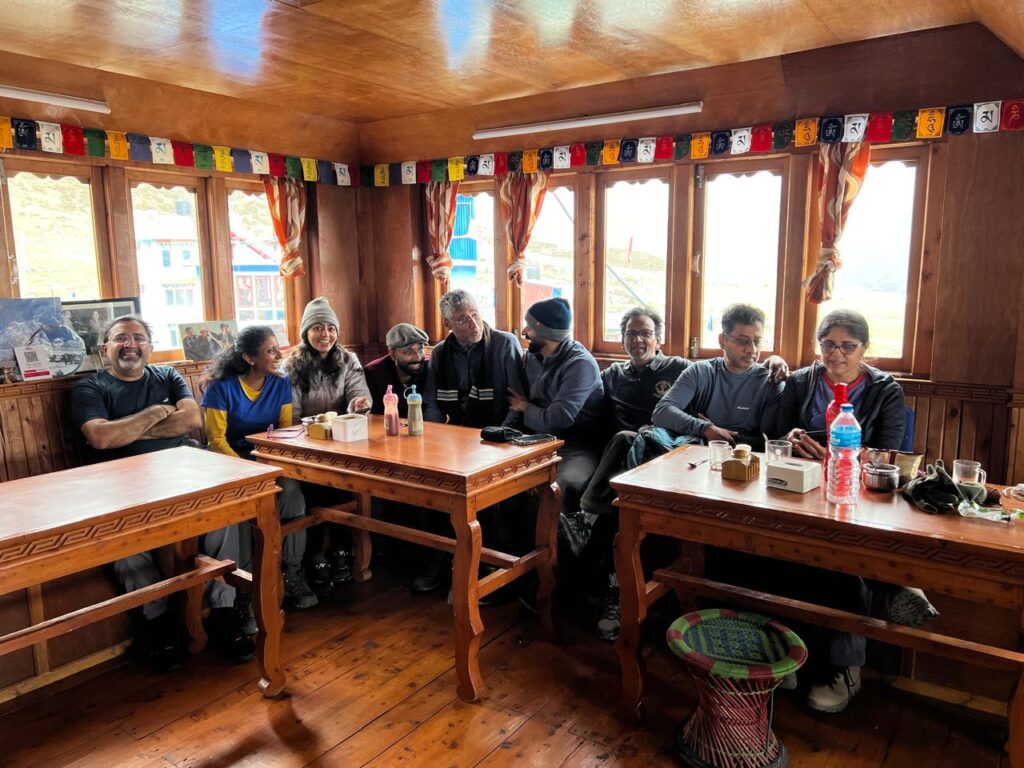
[Dinning restaurant in the Tea-House on the third floor]
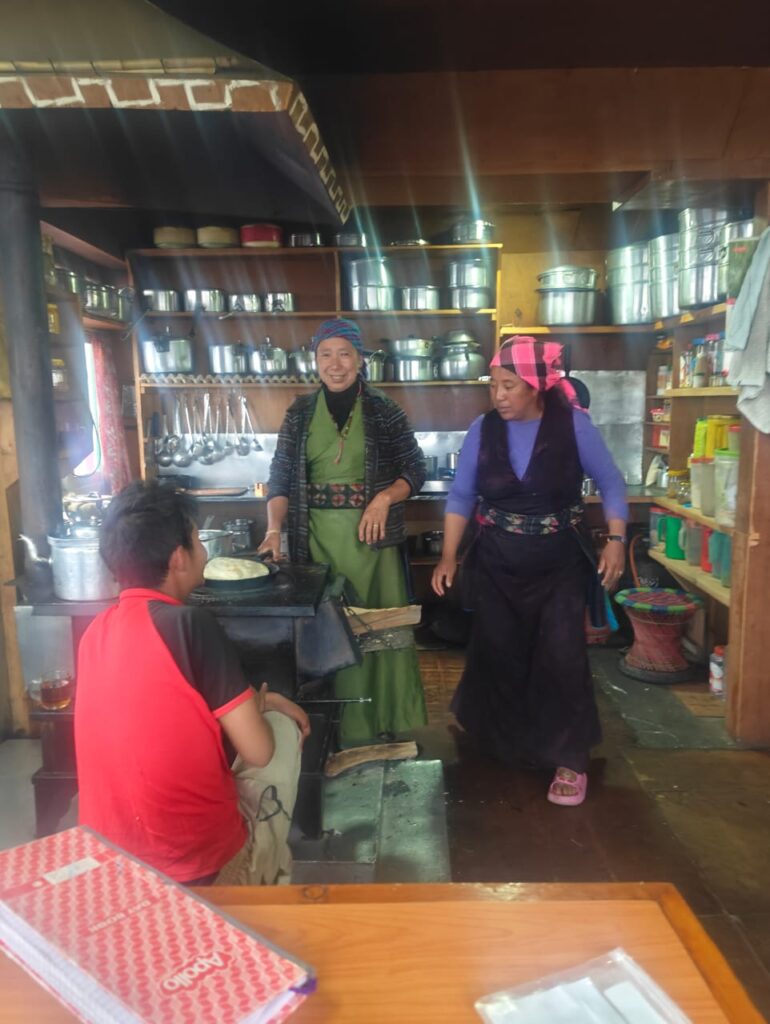
[Kitchen at the Tea House]
The night was a raucous celebration, old Hindi and Tamil songs flooding the dining room, as we sang and danced around the wooden tables. Red-faced from the low oxygen, the fun went on for hours, high off the successful trek. The first-timers chimed in with their own joy – although the first two days had been nothing but complaints, the accomplishment of completing a trek had their blood racing to come back for their next. As all seasoned trekkers know – once you’ve gotten a taste for the mountains, you can never help yourself from coming back for more! Although the Langtang Valley trek might not be the perfect beginner’s trek, if you’ve got moderate fitness, and a love for the mountains, this trek gives you a short, sweet taste of the trekking life, while giving you a good enough workout all the same. Put together a group of people who you know you’ll have fun with – or just yourself, if you’re your own perfect company, and head on up to Langtang Valley! You’ll be sure to have a good time!
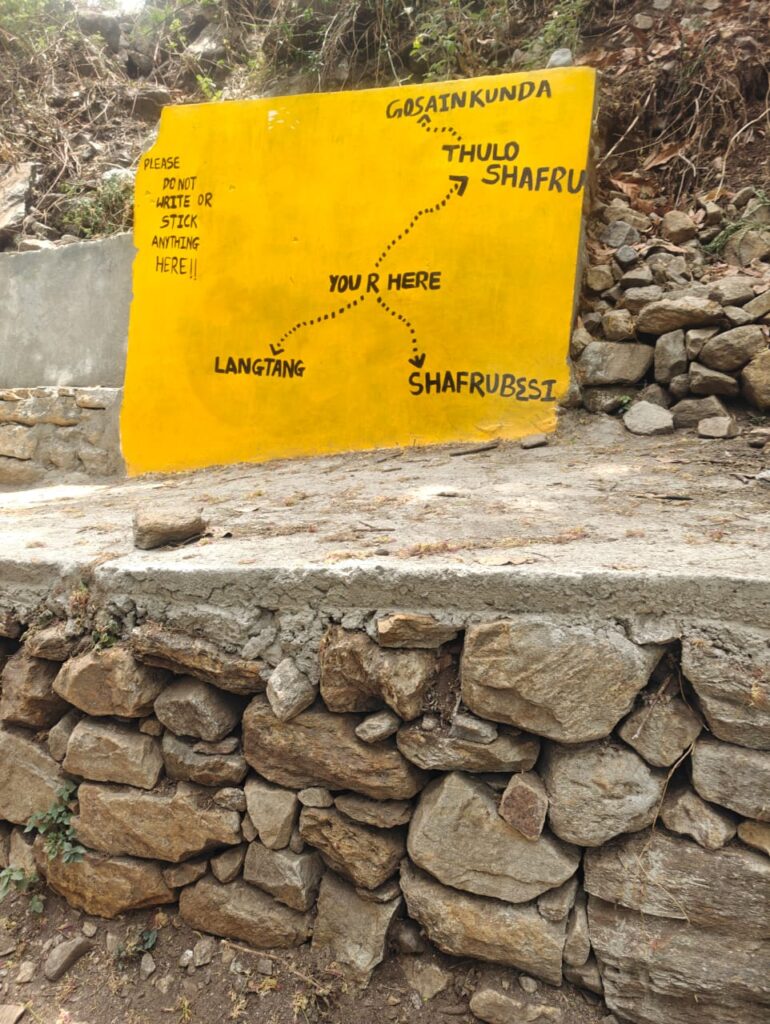
[Our route]
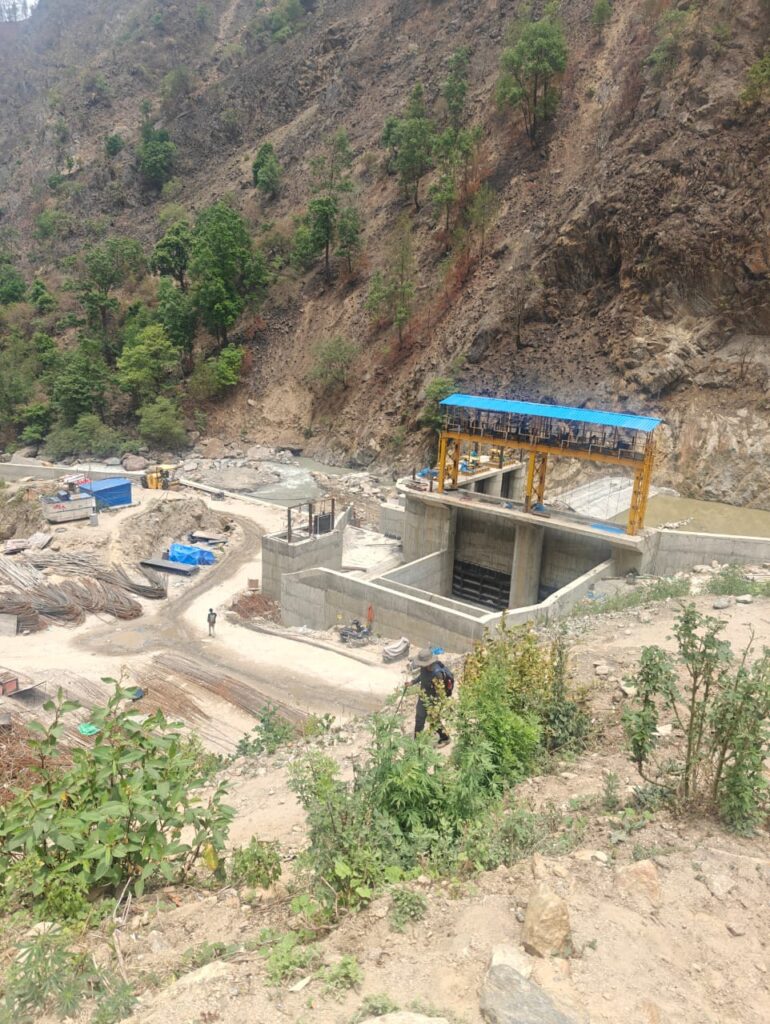
[Hydroelectric Power Station Enroute]
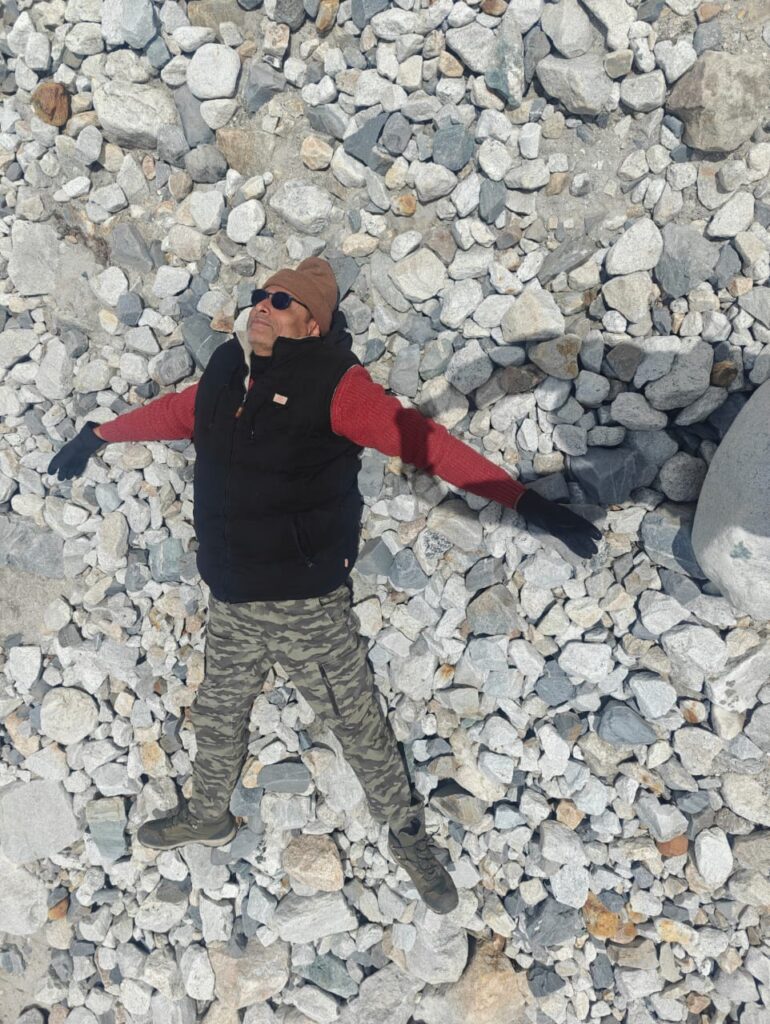
Com-plied by Kapil and Pooja (Oldest and the youngest of the group!)

